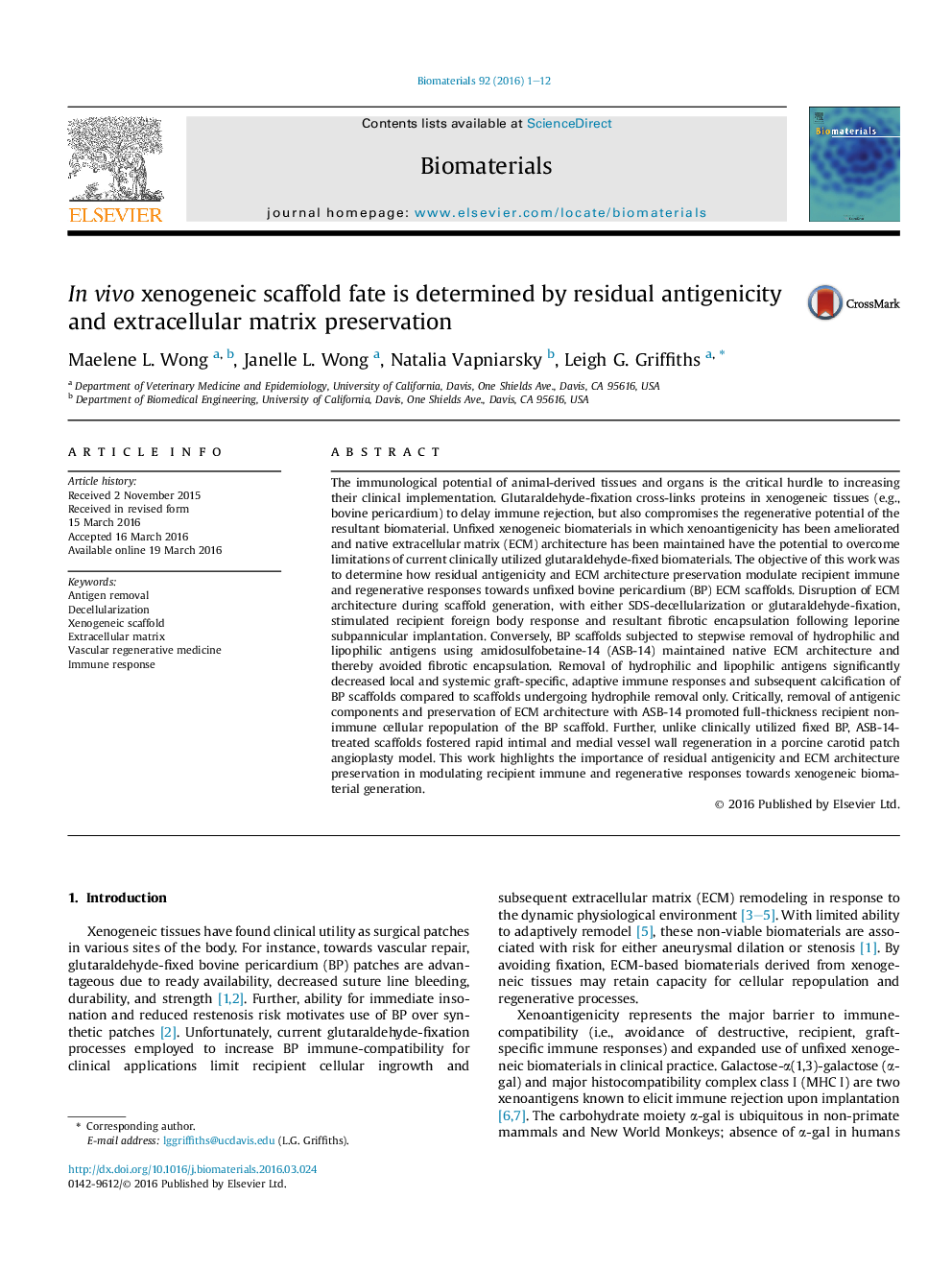| کد مقاله | کد نشریه | سال انتشار | مقاله انگلیسی | نسخه تمام متن |
|---|---|---|---|---|
| 5418 | 381 | 2016 | 12 صفحه PDF | دانلود رایگان |

The immunological potential of animal-derived tissues and organs is the critical hurdle to increasing their clinical implementation. Glutaraldehyde-fixation cross-links proteins in xenogeneic tissues (e.g., bovine pericardium) to delay immune rejection, but also compromises the regenerative potential of the resultant biomaterial. Unfixed xenogeneic biomaterials in which xenoantigenicity has been ameliorated and native extracellular matrix (ECM) architecture has been maintained have the potential to overcome limitations of current clinically utilized glutaraldehyde-fixed biomaterials. The objective of this work was to determine how residual antigenicity and ECM architecture preservation modulate recipient immune and regenerative responses towards unfixed bovine pericardium (BP) ECM scaffolds. Disruption of ECM architecture during scaffold generation, with either SDS-decellularization or glutaraldehyde-fixation, stimulated recipient foreign body response and resultant fibrotic encapsulation following leporine subpannicular implantation. Conversely, BP scaffolds subjected to stepwise removal of hydrophilic and lipophilic antigens using amidosulfobetaine-14 (ASB-14) maintained native ECM architecture and thereby avoided fibrotic encapsulation. Removal of hydrophilic and lipophilic antigens significantly decreased local and systemic graft-specific, adaptive immune responses and subsequent calcification of BP scaffolds compared to scaffolds undergoing hydrophile removal only. Critically, removal of antigenic components and preservation of ECM architecture with ASB-14 promoted full-thickness recipient non-immune cellular repopulation of the BP scaffold. Further, unlike clinically utilized fixed BP, ASB-14-treated scaffolds fostered rapid intimal and medial vessel wall regeneration in a porcine carotid patch angioplasty model. This work highlights the importance of residual antigenicity and ECM architecture preservation in modulating recipient immune and regenerative responses towards xenogeneic biomaterial generation.
Journal: Biomaterials - Volume 92, June 2016, Pages 1–12